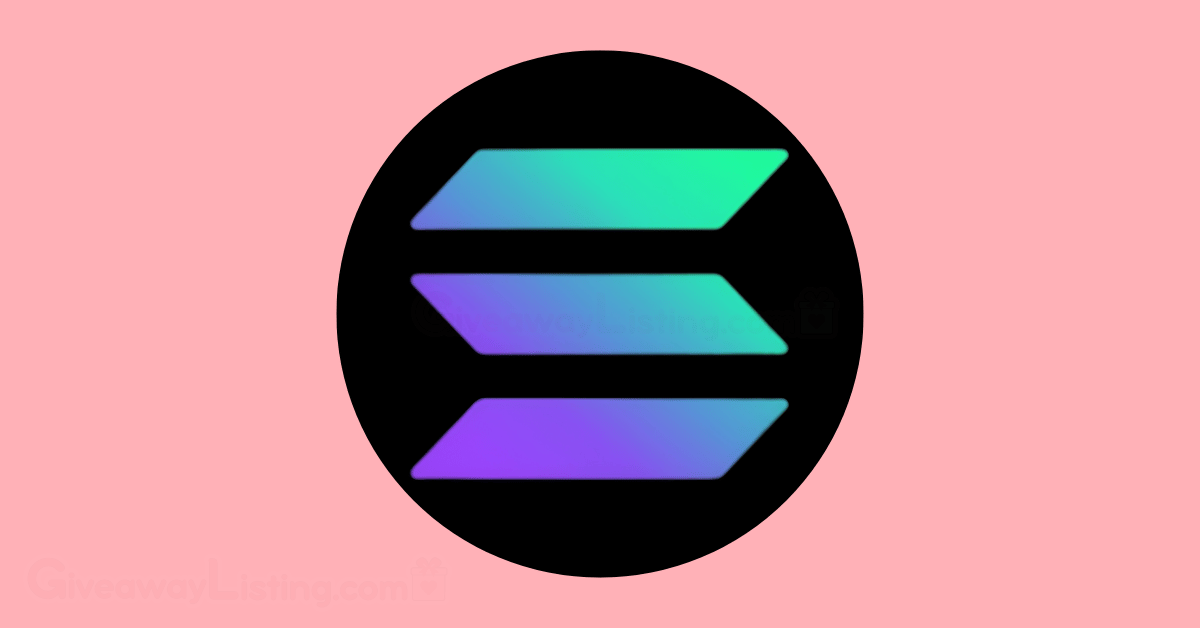What is Solana? SOL Explained – December 2025
Solana is a high-speed public blockchain platform designed for building and running powerful applications and digital assets. It first went live in March 2020, created with the ambitious goal of solving the speed and cost limitations that have challenged older blockchain networks. At its core, Solana aims to provide a super-fast, low-cost, and scalable foundation for the next wave of internet services.
The network is used by a broad spectrum of people, from developers building complex financial systems and high-speed games to artists creating digital collectibles (NFTs) and institutions looking for efficient payment rails.
For users, this translates to faster transactions and fees that typically cost just a fraction of a cent $0.00025 on average. Its native cryptocurrency, SOL, is the lifeblood of the ecosystem; it’s used to pay for these minimal transaction fees and to secure the network through a process called staking. The platform’s unique technical design is the main reason for its impressive performance.
Why is Solana Unique? SOL Features
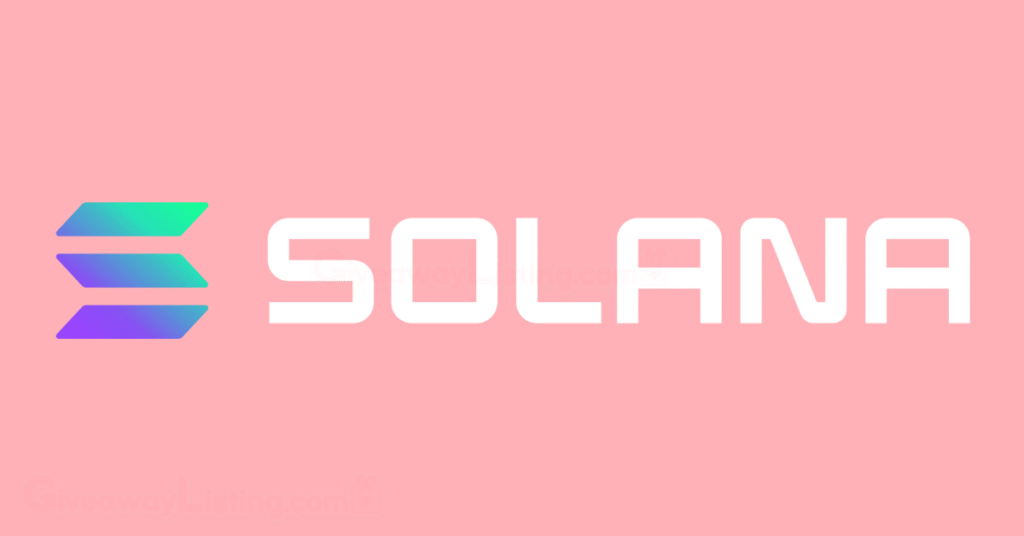
Now that you know what Solana is, let’s look at what makes it stand out from the crowd. Its architecture allows it to handle a massive volume of activity without the high costs or slow speeds common on other networks.
| Feature | Solana (SOL) | Ethereum (ETH) | Bitcoin (BTC) | Cardano (ADA) | Avalanche (AVAX) |
|---|---|---|---|---|---|
| Transaction Speed (TPS) | Up to 50,000 | 15-30 | 5-7 | 250 | 4,500 |
| Avg. Transaction Fee | $0.00025 | $2 – $20+ | $1 – $5+ | $0.17 | $0.01 – $0.10 |
| Consensus Mechanism | Proof-of-History (PoH) + PoS | Proof-of-Stake (PoS) | Proof-of-Work (PoW) | Proof-of-Stake (PoS) | PoS |
| Smart Contracts | Yes (Rust, C) | Yes (Solidity) | Limited | Yes (Plutus) | Yes (Solidity) |
| Energy Consumption | Very Low | Low | Very High | Low | Low |
| Block Time | 400 milliseconds | 12 seconds | 10 minutes | 20 seconds | 1 second |
The most significant aspect of Solana is its Proof-of-History (PoH) timing mechanism. This was the key idea of founder Anatoly Yakovenko, who realized that creating a verifiable timeline of events before asking network participants to agree on it would dramatically speed things up.
PoH acts as a cryptographic clock, stamping and ordering transactions as they come in. This allows validators to process a massive number of transactions in parallel without getting out of sync. Solana’s story is also one of remarkable persistence.
Solana History, Facts & Statistics
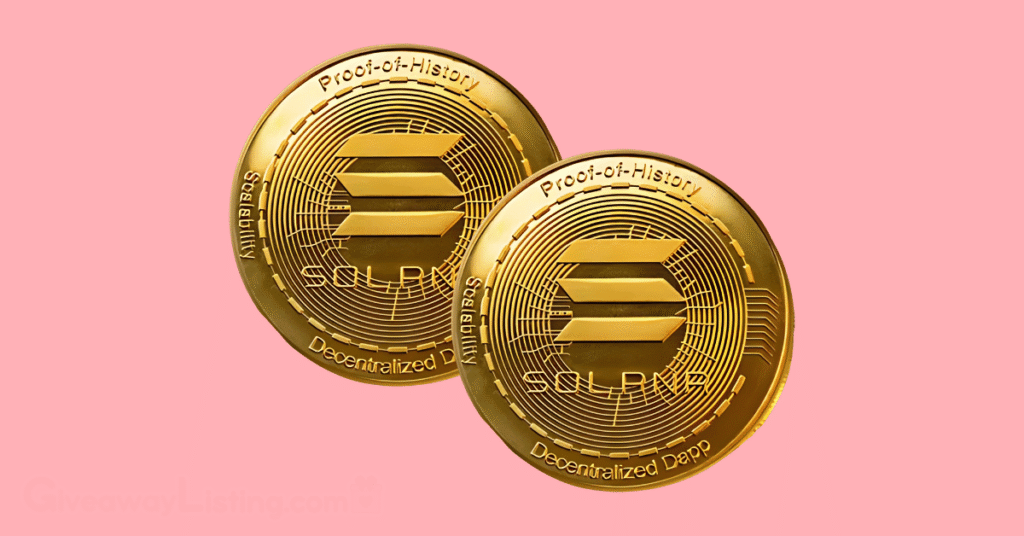
Solana has carved out a significant spot for itself in the digital currency world, often mentioned in the same breath as giants like Ethereum. It’s known primarily for its speed and efficiency, which has made it a go-to platform for developers looking to build applications that require high transaction volumes without the hefty fees seen on other networks. This performance has made it a hub for activity in areas like decentralized finance (DeFi), non-fungible tokens (NFTs), and even blockchain-based gaming.
The platform’s journey has been a rollercoaster. It experienced a massive surge in popularity and value during the 2021 crypto boom, partly due to the NFT craze. However, it also faced a severe test of its resilience following the collapse of the FTX exchange in 2022, an event that deeply impacted its market value due to its close association. Despite this, the network and its community held strong, leading to a notable comeback and solidifying its position as a top contender in the blockchain space.
The History of Solana
The story of Solana began in 2017 when Anatoly Yakovenko, an engineer with a background in designing distributed systems at Qualcomm, published a whitepaper detailing a new concept called Proof-of-History (PoH). Yakovenko’s big idea was that blockchains could be made dramatically faster if there was a reliable way to keep time between computers that didn’t trust each other. He theorized this could boost a network’s capacity far beyond the 15 transactions per second that networks like Ethereum were handling at the time.
In 2018, Yakovenko teamed up with former Qualcomm colleagues Greg Fitzgerald and Stephen Akridge, among others, to bring this idea to life. They initially called their project “Loom” but soon rebranded to “Solana” to avoid confusion with another project. The new name was a nod to Solana Beach, a town in California where the founders had lived.
After several funding rounds and extensive testing, the Solana mainnet beta officially went live on March 16, 2020. Since its launch, it has operated as a single, open, and decentralized global network. It quickly gained traction for its high performance and became a popular alternative for developers and users looking for a more scalable and affordable platform.
Solana Key Facts & Statistics
- The mainnet beta was launched in March 2020.
- The project was co-founded by Anatoly Yakovenko, Greg Fitzgerald, and Stephen Akridge.
- The network can theoretically handle up to 65,000 transactions per second (TPS), with a real-world average often sitting around 2,400 TPS.
- One of its biggest draws is the low cost, with fees averaging $0.00025 per transaction.
- Solana has a swift block time of about 400 milliseconds.
- The price of SOL reached approximately $295.00 in January 2025.
- The price of SOL was as low as $0.51 in May 2020.
- The DeFi ecosystem on Solana holds between $9.3 and $9.5 billion in value.
- Developer Activity: The network boasts between 2,500 and 3,000 monthly active developers.
- Major Partnerships: Solana has attracted big names, including collaborations with Visa and Google Cloud.
- Despite its high performance, the network has faced stability issues, experiencing 8 major and 10 partial outages since its launch.
- There are over 32 million total wallets that have interacted with the Solana network.
- Like all digital currencies, the value of Solana’s native token, SOL, is subject to significant market swings and external factors.
SOL Price Predictions. Is Solana Going to Crash or Moon in 2025?
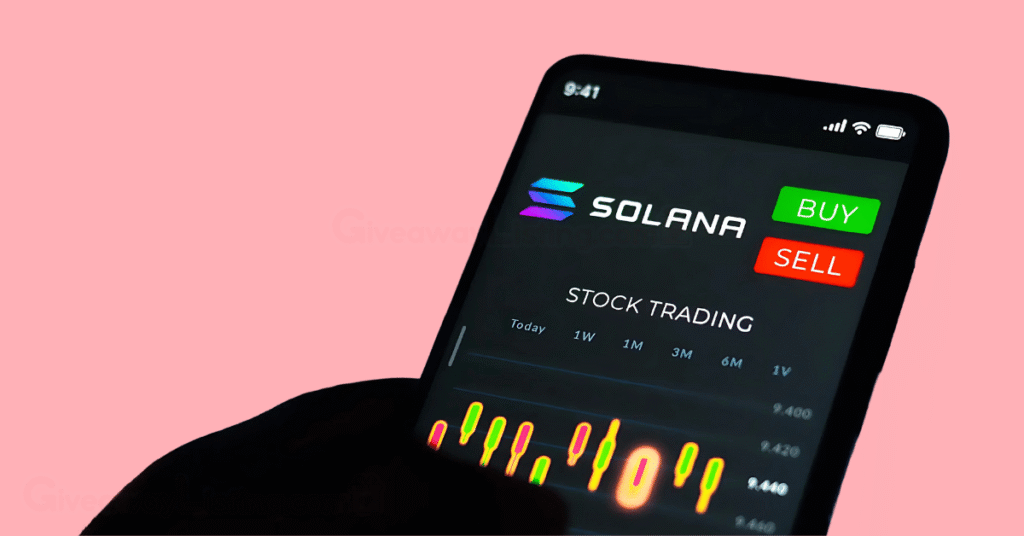
The value of SOL can change dramatically based on market sentiment, technological updates, and broader economic trends. This has been clear from its launch price of $0.22 in 2020 to an all-time low of about $0.51 shortly after.
The real fireworks started in 2021, when a massive bull run pushed SOL to a peak of nearly $260. More recently, in January 2025, it set a new record high of approximately $295. These peaks and valleys show just how quickly fortunes can change, making price predictions a challenging but fascinating exercise.
Solana Price Prediction in 2025
Several key elements are expected to influence Solana’s price in 2025. One of the most significant is the Firedancer validator client. This major upgrade is designed to dramatically improve the network’s performance and stability, with the potential to handle over 1 million transactions per second. A successful implementation could greatly increase confidence in the network’s ability to scale, attracting more users and developers, which would likely have a positive effect on its price.
Another major factor is institutional adoption. Big names like Visa are already building on Solana, and there is growing interest from major banks in using the platform for tokenizing assets. The potential approval of a Solana ETF (Exchange-Traded Fund) could also open the floodgates for more mainstream investment, pushing the price higher.
On the other hand, risks remain. The network’s history of outages is a primary concern for many. Any future downtime could damage its reputation and slow its growth. Furthermore, the regulatory landscape is still unclear. The U.S. Securities and Exchange Commission (SEC) has previously suggested that SOL could be classified as an unregistered security, and any negative outcome from ongoing legal disputes could negatively affect its value. Competition from Ethereum and its growing ecosystem of Layer-2 scaling solutions also presents a constant challenge.
For more charts and analysis, you can find other detailed Solana price predictions from market experts.
Is Solana Going to Crash or Moon in 2025?
Solana’s continued growth in 2025 appears strong. The Firedancer upgrade represents a massive technical step forward, directly addressing past concerns about network stability while promising a level of performance that few competitors can match.
The increasing interest from institutional players cannot be overstated. When financial giants like HSBC and Bank of America begin exploring a platform for tokenization, it signals a level of trust that goes beyond the typical retail crypto market. This, combined with the possibility of an ETF, suggests that a significant amount of capital is waiting on the sidelines. The growth of the ecosystem itself, especially in DeFi and payments, continues to create real-world demand for the SOL token.
However, the possibility of a downturn shouldn’t be dismissed. A major network outage, especially after the Firedancer launch, could be devastating for market confidence. Similarly, a harsh regulatory ruling from the SEC could send prices tumbling.
The market is also still dealing with the overhang of SOL tokens tied to the bankrupt FTX/Alameda estate, and large-scale sales of these tokens could put downward pressure on the price. Ultimately, 2025 is shaping up to be a pivotal year for Solana, with clear catalysts that could send it either way.
Solana Risks Scams and Hacks

Getting involved with Solana, like any digital currency, comes with its own set of challenges. It’s not just about the market’s ups and downs; the space is also a playground for scammers and hackers looking to get their hands on your assets. The speed and low cost that make Solana so attractive for legitimate users also, unfortunately, make it a target for bad actors who can execute scams quickly and cheaply.
The growth of Solana’s ecosystem, particularly the explosion of memecoins, has created fertile ground for various deceptive schemes. From sophisticated wallet drainers disguised as helpful tools to simple but effective social engineering tricks, users need to stay alert. Understanding the landscape of potential threats is the first step toward protecting your investments and ensuring a safe experience with Solana.
The Risks Associated With Solana
Beyond the direct threat of scams, there are broader risks tied to the Solana network itself. One of the most talked-about issues has been network stability. Solana has experienced several high-profile outages since its launch, during which the entire network went offline for hours at a time. While developers have been working hard to improve reliability, these incidents have raised questions about its ability to handle massive loads, which can impact investor confidence.
Another significant risk is regulatory uncertainty. In the past, the U.S. Securities and Exchange Commission (SEC) has suggested that SOL, along with other digital currencies, might be considered an unregistered security. The outcome of ongoing legal battles in the crypto space could have major implications for Solana, potentially affecting its price and how it is traded on various platforms.
There are also concerns about centralization, as a relatively small number of validators control a significant portion of the staked SOL, which could theoretically pose a security risk.
To keep your assets safer, consider these steps:
- Keep up with news about network upgrades and potential stability issues.
- Avoid putting all your funds into a single asset or platform to spread out your risk.
- Have a basic grasp of how Solana works, including its consensus mechanism and the role of validators.
- Pay attention to news from regulatory bodies like the SEC, as their decisions can have a big impact on the market.
How to Avoid Solana Scams and Hacks?
The Solana ecosystem has seen its share of security incidents. One of the most significant was the Wormhole bridge exploit in 2022, where hackers made off with $326 million. Another major event was the Slope wallet hack, which compromised over 8,000 wallets and resulted in the theft of around $8 million due to private keys being improperly stored.
More recently, the memecoin craze has led to a surge in rug pulls, where developers launch a token, attract investment, and then disappear with the funds. Malicious trading bots, phishing websites that mimic popular applications, and airdrop scams are also common. These schemes often create a sense of urgency, tricking users into connecting their wallets and signing transactions that drain their funds.
Here are some red flags to watch out for:
- Promises of Guaranteed High Returns: If it sounds too good to be true, it almost certainly is.
- Anonymous Teams: Be cautious of projects with no public-facing team members.
- Pressure to Act Fast: Scammers often try to rush you into making bad decisions.
- Unsolicited DMs: Never trust direct messages from “support staff” or anyone offering you a special deal or asking for your wallet information.
- Suspicious Links: Always double-check URLs to ensure you are on the official website of a project or marketplace.
How to Secure Your Solana Wallet?
Your wallet is the key to your digital assets, so securing it is your top priority. Following a few essential security practices can make a huge difference in protecting you from theft.
- Use a Hardware Wallet: For storing any significant amount of crypto, a hardware wallet like a Ledger or Trezor is the gold standard. It keeps your private keys offline, making them immune to online hacking attempts.
- Guard Your Seed Phrase: Your seed phrase is the master key to your wallet. Write it down on paper and store it in a secure, offline location. Never store it as a screenshot, in a text file, or a cloud service. Anyone who gets this phrase has full control of their assets.
- Use a Burner Wallet: When trying out new, unproven applications, use a “burner” wallet with only a small amount of funds in it. This limits your potential losses if the app turns out to be malicious.
- Revoke Permissions: Regularly review and revoke unnecessary permissions you’ve granted to applications. Many tools are available that let you see which apps have access to your wallet and disconnect them.
- Bookmark Official Sites: To avoid phishing scams, always navigate to frequently used platforms through your own bookmarks rather than clicking on links from social media or search engines.
It’s critical to rely on information only from official project channels and be extremely cautious about connecting your wallet to unknown sites or signing transactions you don’t fully understand.
Latest News on Solana

Since its creation, Solana has constantly been a work in progress, with its team and community shipping updates to improve performance and expand its capabilities. The network has shown incredible resilience, bouncing back from market downturns and technical setbacks. Recently, activity has surged, with the total value locked (TVL) in its DeFi ecosystem surpassing $10 billion.
This growth is supported by a calendar full of technical upgrades and market developments. Here is a look at some of the most important recent news and upcoming events that could shape the future of Solana.
- Solana ETF Filings: In a major move for institutional adoption, several asset management firms have filed applications with the SEC to create Solana exchange-traded funds (ETFs). If approved, these ETFs would make it much easier for mainstream investors to get exposure to SOL.
- DeFi and Memecoin Boom: The Solana ecosystem continues to be a hotbed for DeFi innovation and memecoin trading. The volume on decentralized exchanges (DEXs) has hit record highs, driven by the low fees and fast transaction times that make high-frequency trading possible.
- Partnership with R3: Solana has announced a collaboration with enterprise software firm R3. This partnership aims to bring R3’s large base of institutional clients to the Solana network, potentially onboarding over $15 billion in tokenized assets.
For more day-to-day updates, you can also check out the latest Solana crypto news. To stay on top of the fast-moving world of Solana, it’s best to follow their official channels directly:
- Official Website: solana.com
- Official X (Twitter): @solana
- Solana Foundation: @SolanaFndn
How to Get Started with Solana?
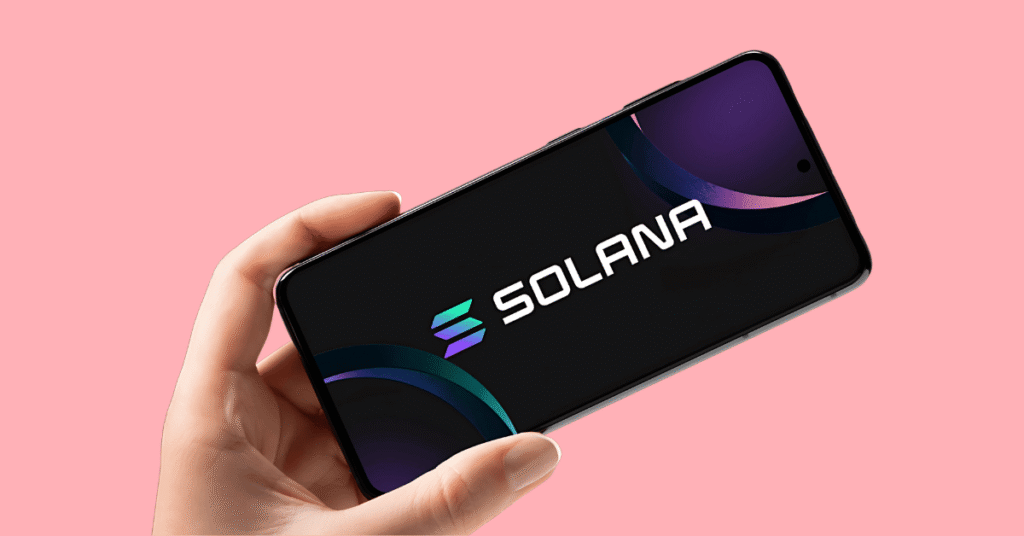
Jumping into the Solana ecosystem is more straightforward than you might think. With its focus on user-friendly applications and low transaction costs, getting set up requires just a few simple steps.
Whether you want to trade digital assets, collect NFTs, or play the latest web3 games, this is all you need to do.
- Choose and Set Up a Wallet: Your wallet is your digital identity and the key to interacting with everything on Solana. Download the wallet as a browser extension or mobile app from its official website, select the option to create a new wallet, and follow the prompts. Crucially, you will be given a 12 or 24-word “seed phrase.” Write this down on paper and store it somewhere safe and offline. This is your only backup; if you lose it, you lose access to your assets forever.
- Acquire Some SOL Tokens: To do anything on the network, you’ll need some of its native token, SOL, to pay for the very small transaction fees. You can get SOL in a couple of ways. The most common method is to buy it on a centralized exchange like Coinbase or Kraken and then transfer it to your new wallet’s public address. Alternatively, many wallets have a feature to buy crypto directly inside the app using a credit card or bank transfer.
- Explore Solana Applications: With your wallet funded, you’re ready to go. You can find a directory of applications on Solana’s official website under the ecosystem tab. To interact with an application, you’ll simply click the “Connect Wallet” button on its site. Your wallet will then pop up and ask you to approve the connection. From there, every transaction, whether it’s a token swap or an NFT purchase, will require your explicit approval in the wallet.
Before you start, remember that all digital currencies are volatile and come with risks. The Solana network has a history of instability, and the space is filled with scams. Always be security-conscious, do your own research before investing in any project, and never share your seed phrase with anyone.
Here are the most essential takeaways:
- High Performance: Solana is built for speed, with block times of 400 milliseconds and the ability to handle thousands of transactions per second.
- Low Cost: Transaction fees are a major advantage, averaging just $0.00025.
- Proof-of-History (PoH): This unique timing mechanism is the secret sauce to its high throughput.
- Wallet Security is Your Job: Your seed phrase is your responsibility. Keep it secret and store it safely offline.
- Risks are Real: Be aware of market volatility, past network outages, and the prevalence of scams and hacks in the ecosystem.
This information is current as of December 2025.
What is Solana FAQs
Below are answers to some frequently asked questions about Solana in 2025:
What Does Solana Coin Do?
The Solana coin, SOL, is the native token used to power the network. Its primary functions are paying for transaction fees, which average a tiny $0.00025, and securing the blockchain through staking. By staking SOL, holders can earn rewards, with current yields between 7-11% APY, and participate in the platform’s governance.
How is Solana Different From Bitcoin?
Solana and Bitcoin serve different purposes. Bitcoin is primarily a digital store of value, while Solana is a high-performance platform for building decentralized applications. This is reflected in their speed; Solana processes around 2,400 transactions per second (TPS) on average, whereas Bitcoin handles about 7 TPS, making Solana far more suitable for high-speed applications.
Is Solana a Good Investment?
Solana presents a high-risk, high-reward opportunity, driven by its powerful technology and growing institutional adoption. However, it faces significant risks, including a history of 8 major network outages and ongoing regulatory uncertainty with the SEC. Its value is highly volatile, so any investment decision requires careful personal research and risk assessment.
How Much is $1 in Solana?
The amount of Solana you can get for $1 changes with the market price. Since the price is always fluctuating, the exact amount you receive will vary depending on when you buy.
Can Solana Hit $1000?
Reaching $1,000 is possible but depends on several key factors. Bullish price predictions see SOL reaching the $1,004 to $1,258 range by 2030, driven by the Firedancer upgrade, which targets over 1 million TPS, and potential ETF approvals. Achieving this milestone requires overcoming network stability issues and navigating regulatory challenges.
Who Owns Solana?
No single entity owns Solana, as it is a decentralized network. The project was initiated by its founders at Solana Labs, which continues to work on the core technology. The Solana Foundation, a non-profit based in Switzerland, is dedicated to the security and growth of the ecosystem, which is supported by thousands of independent validators globally.

